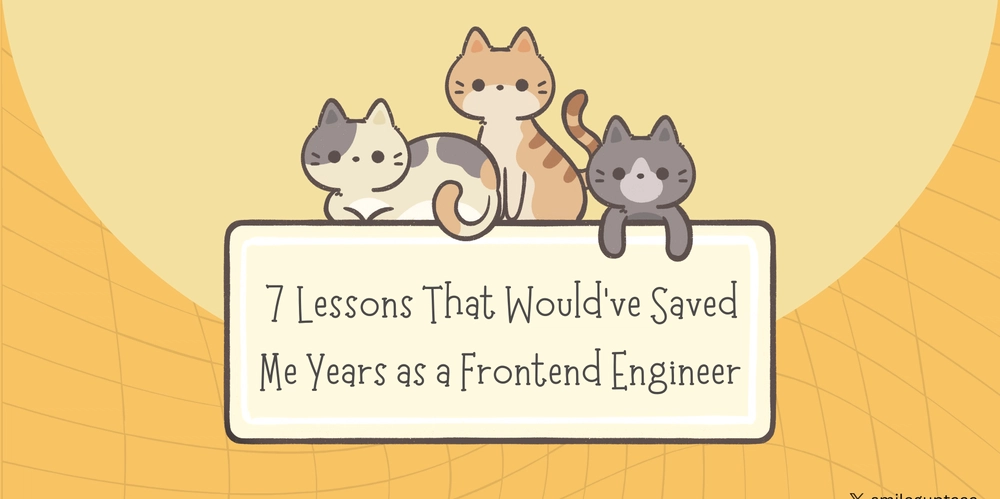AI Revolution: From Data Centers to Everyday Decisions
Welcome to the Amazing World of AI! Imagine a world where your phone knows exactly what song you want to hear or your GPS picks the fastest route to school without you typing anything. Sounds like magic, right? It’s not—it’s Artificial Intelligence, or AI! AI is like a super-smart friend who learns from tons of information and helps make life easier. From powering huge computers in data centers to helping you decide what to watch on TV, AI is changing everything. This blog will take you on a fun journey through the AI revolution, explaining how it works and why it’s so exciting. We’ll explore how AI started, how it’s used today, and what it might do tomorrow—all in simple words so you can understand it easily. Get ready to discover how AI is making the world smarter, one decision at a time! Let’s dive in and see how this incredible technology is shaping our lives. What Is AI and How Did It Begin? Artificial Intelligence is when computers act a bit like humans—they learn, think, and make choices. Think of AI as a brainy robot that studies patterns to solve problems. For example, when you talk to a virtual assistant like Siri, it listens, understands, and answers. But how did AI start? Long ago, in the 1950s, scientists dreamed of machines that could think. They built computers to play games like chess, teaching them to “learn” from moves. These early machines were slow and needed huge rooms, called data centers, to work. Over time, computers got smaller, faster, and smarter. By the 2000s, AI could do more, like recognize faces in photos. Today, AI uses something called “machine learning,” where it studies tons of data—like pictures, words, or numbers—to get better at tasks. It’s like how you practice soccer to score more goals! AI’s journey from big, clunky machines to your phone is a story of human creativity and hard work, and it’s only getting started. AI in Data Centers: The Power Behind the Scenes Data centers are like the heart of AI. These are huge buildings filled with powerful computers that store and process information. Imagine a library with millions of books, but instead of paper, it’s all digital data—photos, videos, and more. AI in data centers does heavy lifting, like analyzing weather patterns to predict storms or helping scientists find new medicines. These computers use “deep learning,” a type of AI that mimics how our brains work. They study massive amounts of data to find patterns humans might miss. For example, a data center might help a store figure out what toys kids want most for Christmas. But running these centers takes a lot of energy, so companies are working to make them greener, using solar or wind power. Data centers are hidden from us, but they’re super important. Without them, AI couldn’t do big tasks like keeping the internet running or helping doctors save lives. Next time you use an app, remember: a data center’s AI is probably helping out! AI in Everyday Life: Making Decisions Easy AI isn’t just for big computers—it’s in your daily life, too! When you ask your smart speaker to play a song, AI listens and picks the right one. Or when you scroll through a streaming app, AI suggests movies you’ll love based on what you’ve watched before. It’s like having a personal helper who knows you really well. AI also helps with navigation. Apps like Google Maps use AI to find the quickest route to your friend’s house, avoiding traffic jams. Even in school, AI can help! Some apps use AI to create fun quizzes that match your learning level, making studying feel like a game. Another cool use is in shopping—AI helps online stores show you clothes or toys you might like. By studying your choices, AI makes decisions faster and better. It’s not perfect, but it’s getting smarter every day, helping us save time and have more fun in our busy lives. How AI Learns: The Magic of Machine Learning Ever wonder how AI gets so smart? It’s because of something called machine learning. Think of it like teaching a puppy new tricks. You show the puppy what to do, like sit or fetch, and it learns by practicing. AI learns the same way, but instead of treats, it uses data. For example, to teach AI to recognize cats in photos, you show it thousands of cat pictures. The AI studies them and learns what makes a cat—whiskers, ears, fur. Over time, it gets really good at spotting cats, even in new photos. This learning happens with math and patterns, not actual thinking like humans. Machine learning needs lots of data, like videos, texts, or numbers, to work well. That’s why companies collect information (don’t worry, they keep it safe!). The more data AI has, the better it gets at tasks like answering questions or even driving cars. Machine learning is the secret sauce that makes AI so powerful and helpful. A Real-Life AI Story: Music and Creativity Let me share a quick story about how AI is used in a fun way. I once met an app developer who wo

Welcome to the Amazing World of AI!
Imagine a world where your phone knows exactly what song you want to hear or your GPS picks the fastest route to school without you typing anything. Sounds like magic, right? It’s not—it’s Artificial Intelligence, or AI! AI is like a super-smart friend who learns from tons of information and helps make life easier. From powering huge computers in data centers to helping you decide what to watch on TV, AI is changing everything. This blog will take you on a fun journey through the AI revolution, explaining how it works and why it’s so exciting. We’ll explore how AI started, how it’s used today, and what it might do tomorrow—all in simple words so you can understand it easily. Get ready to discover how AI is making the world smarter, one decision at a time! Let’s dive in and see how this incredible technology is shaping our lives.
What Is AI and How Did It Begin?
Artificial Intelligence is when computers act a bit like humans—they learn, think, and make choices. Think of AI as a brainy robot that studies patterns to solve problems. For example, when you talk to a virtual assistant like Siri, it listens, understands, and answers. But how did AI start? Long ago, in the 1950s, scientists dreamed of machines that could think. They built computers to play games like chess, teaching them to “learn” from moves. These early machines were slow and needed huge rooms, called data centers, to work. Over time, computers got smaller, faster, and smarter. By the 2000s, AI could do more, like recognize faces in photos. Today, AI uses something called “machine learning,” where it studies tons of data—like pictures, words, or numbers—to get better at tasks. It’s like how you practice soccer to score more goals! AI’s journey from big, clunky machines to your phone is a story of human creativity and hard work, and it’s only getting started.
AI in Data Centers: The Power Behind the Scenes
Data centers are like the heart of AI. These are huge buildings filled with powerful computers that store and process information. Imagine a library with millions of books, but instead of paper, it’s all digital data—photos, videos, and more. AI in data centers does heavy lifting, like analyzing weather patterns to predict storms or helping scientists find new medicines. These computers use “deep learning,” a type of AI that mimics how our brains work. They study massive amounts of data to find patterns humans might miss. For example, a data center might help a store figure out what toys kids want most for Christmas. But running these centers takes a lot of energy, so companies are working to make them greener, using solar or wind power. Data centers are hidden from us, but they’re super important. Without them, AI couldn’t do big tasks like keeping the internet running or helping doctors save lives. Next time you use an app, remember: a data center’s AI is probably helping out!
AI in Everyday Life: Making Decisions Easy
AI isn’t just for big computers—it’s in your daily life, too! When you ask your smart speaker to play a song, AI listens and picks the right one. Or when you scroll through a streaming app, AI suggests movies you’ll love based on what you’ve watched before. It’s like having a personal helper who knows you really well. AI also helps with navigation. Apps like Google Maps use AI to find the quickest route to your friend’s house, avoiding traffic jams. Even in school, AI can help! Some apps use AI to create fun quizzes that match your learning level, making studying feel like a game. Another cool use is in shopping—AI helps online stores show you clothes or toys you might like. By studying your choices, AI makes decisions faster and better. It’s not perfect, but it’s getting smarter every day, helping us save time and have more fun in our busy lives.
How AI Learns: The Magic of Machine Learning
Ever wonder how AI gets so smart? It’s because of something called machine learning. Think of it like teaching a puppy new tricks. You show the puppy what to do, like sit or fetch, and it learns by practicing. AI learns the same way, but instead of treats, it uses data. For example, to teach AI to recognize cats in photos, you show it thousands of cat pictures. The AI studies them and learns what makes a cat—whiskers, ears, fur. Over time, it gets really good at spotting cats, even in new photos. This learning happens with math and patterns, not actual thinking like humans. Machine learning needs lots of data, like videos, texts, or numbers, to work well. That’s why companies collect information (don’t worry, they keep it safe!). The more data AI has, the better it gets at tasks like answering questions or even driving cars. Machine learning is the secret sauce that makes AI so powerful and helpful.
A Real-Life AI Story: Music and Creativity
Let me share a quick story about how AI is used in a fun way. I once met an app developer who worked at an app development company in London. He was super excited about a side project—a playlist generator for local music gigs. Using AI, his app studied people’s music tastes and created custom playlists for concerts in the city. For example, if you loved pop music, the AI would pick the best pop songs from upcoming shows. It even suggested new bands you might like! The developer told me AI made the app smarter by learning from users’ choices, like which songs they skipped or saved. This small project showed how AI can spark creativity, helping people discover music in a new way. The app development company in London used AI to make the app fun and personal, proving that AI isn’t just for big tasks—it can make everyday moments special, too. This is just one example of AI’s magic in action!
AI in the Future: What’s Next?
What will AI do in the next 10 years? The possibilities are endless! Scientists are working on AI that can help solve big problems, like cleaning up pollution or finding new energy sources. For example, AI could study oceans to save coral reefs or help farmers grow more food with less water. In your life, AI might become an even better friend. Imagine a robot tutor that teaches you math in a way that’s fun for you, or a game that changes its story based on your choices. AI could also make cities smarter—traffic lights might use AI to stop traffic jams before they start. But there’s a catch: we need to make sure AI is fair and safe. If AI learns from bad data, it might make mistakes, like picking the wrong movie for you. That’s why people are working hard to keep AI kind and helpful. The future of AI is exciting, and you might even help shape it one day!
Challenges of AI: Keeping It Fair and Safe
AI is awesome, but it’s not perfect. One big challenge is making sure AI is fair. Since AI learns from data, if the data has mistakes or unfair ideas, AI can make bad choices. For example, if an AI hiring tool only sees resumes from men, it might think men are better for jobs, which isn’t true! Another challenge is privacy. AI needs data to work, but we don’t want it knowing too much about us, like our favorite snacks or where we live. Companies are working to keep data safe, using tricks like scrambling information so it’s hard to steal. Safety is also key—AI in cars or hospitals must make the right decisions to keep people safe. Finally, there’s the worry that AI might take jobs, like driving trucks. But AI can also create new jobs, like building apps or teaching AI to be better. By solving these challenges, we can make AI a true friend for everyone.
How You Can Explore AI: Fun Tips for Kids
Want to have fun with AI? You can start today! First, try using AI apps, like a drawing tool that turns your sketches into cool art. Websites like Google’s Quick, Draw! use AI to guess what you’re drawing—it’s like a game! You can also talk to virtual assistants like Alexa or Siri and ask silly questions to see how they answer. If you’re curious about coding, try Scratch, a free website where you can create games with AI-like features, like characters that learn from players. Reading books about AI, like “AI for Kids,” can teach you more in a fun way. You can even join online AI clubs for kids to learn with others. The best part? You don’t need to be a genius—just be curious! Exploring AI is like solving a puzzle, and every step teaches you something new. Who knows? You might invent the next big AI idea!
AI Is Your Future, So Dream Big!
The AI revolution is all around us, from giant data centers crunching numbers to apps helping us pick the perfect song. AI started as a dream in the 1950s and now helps with everything—school, shopping, even saving the planet. It learns through machine learning, making decisions that save time and spark creativity, like the playlist app from that app development company in London. But AI also needs to be fair, safe, and kind, and that’s where we all come in. By exploring AI, you can help shape its future. Whether you’re drawing with AI tools or coding your own games, you’re part of this exciting world. So, dream big! Maybe one day, you’ll create an AI that helps the world in ways we can’t even imagine. Keep asking questions, stay curious, and let AI inspire you to make the future awesome!









































































































































































![[The AI Show Episode 144]: ChatGPT’s New Memory, Shopify CEO’s Leaked “AI First” Memo, Google Cloud Next Releases, o3 and o4-mini Coming Soon & Llama 4’s Rocky Launch](https://www.marketingaiinstitute.com/hubfs/ep%20144%20cover.png)




























































































































![[DEALS] The All-in-One Microsoft Office Pro 2019 for Windows: Lifetime License + Windows 11 Pro Bundle (89% off) & Other Deals Up To 98% Off](https://www.javacodegeeks.com/wp-content/uploads/2012/12/jcg-logo.jpg)



























![Is this too much for a modular monolith system? [closed]](https://i.sstatic.net/pYL1nsfg.png)






















































































































_Andreas_Prott_Alamy.jpg?width=1280&auto=webp&quality=80&disable=upscale#)
































































































![What features do you get with Gemini Advanced? [April 2025]](https://i0.wp.com/9to5google.com/wp-content/uploads/sites/4/2024/02/gemini-advanced-cover.jpg?resize=1200%2C628&quality=82&strip=all&ssl=1)













![Apple Shares Official Trailer for 'Long Way Home' Starring Ewan McGregor and Charley Boorman [Video]](https://www.iclarified.com/images/news/97069/97069/97069-640.jpg)
![Apple Watch Series 10 Back On Sale for $299! [Lowest Price Ever]](https://www.iclarified.com/images/news/96657/96657/96657-640.jpg)
![EU Postpones Apple App Store Fines Amid Tariff Negotiations [Report]](https://www.iclarified.com/images/news/97068/97068/97068-640.jpg)
![Apple Slips to Fifth in China's Smartphone Market with 9% Decline [Report]](https://www.iclarified.com/images/news/97065/97065/97065-640.jpg)




































































































































